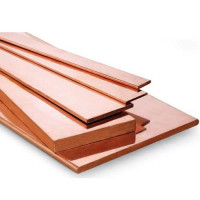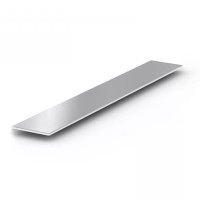Brovary sheet paronite oil and petrol resistant PMB, PON for gaskets 0.4-6.5 mm
Sheet paronite is an asbestos or non-asbestos material made from: synthetic rubbers; various fillers; asbestos fibers; vulcanizing agents. During the production process, the raw mass is pressed, as a result, it is possible to obtain sheets, the thickness of which varies from 0.4 to 6 mm. Whereas the dimensions of the sheet itself may be different. Fields of application paronite sheet The above-mentioned material is used for sealing joints that are exposed to aggressive media or high temperatures during operation. Special properties allow the use of paronite in various areas of industry and the national economy, in: oil-producing area; mechanical engineering; electric power industry; chemical industry; The material is elastic, so it can also be used in other areas, for example, in industries where the production of elite orthopedic mattresses and electric machines is established. Specifications weight of sheet paronite Sheet paronite lends itself well to punching. It is used in industry, and its density can vary from 1.5 to 1.8 g/cm3, but this value can be higher or lower. During long-term storage of the material, it does not deform, is not affected by fungi and bacteria, which allows it to be used in areas with a temperate and tropical climate. The material is able to retain properties at temperatures ranging from -50 to +490 °C. The quality is evidenced by elasticity, because when bent, the material does not crack and does not break. Varieties of paronite and areas of their use sheet paronite dimensions Sheet paronite is manufactured according to state standards 481-80 and is a general-purpose material. It is used to seal stationary parts that are in working environments, among them should be distinguished: gaseous ammonia; saline solutions; liquid oxygen; oil products. To date, varieties of paronite are known that can be used under the most severe conditions. For example, PON-A is used as a sealant for joints that form the basis of equipment operating in aqueous salt solutions, in boiling liquid and steam. With the help of PON-B, the elements of equipment and pipelines are sealed, which are operated in dry, inert and neutral gases, as well as boiling water. Paronite is able to quite persistently endure the effects of mineral oils. Application
Paronite is widely used in the chemical and petrochemical industries, in mechanical engineering, metallurgy and metalworking, electrical engineering and electric power industry to ensure the necessary tightness of various types of joints under the influence of aggressive media, high temperatures and pressure.
General Purpose Paronite (PON)
Paronite of general purpose is applied in environments: fresh superheated water, saturated and superheated steam, dry neutral and inert gases; air; aqueous solutions of salts, liquid and gaseous ammonia, alcohols; liquid oxygen and nitrogen; heavy and light oil products.
The temperature of the working environment is from -50 to +450 °С.
Compressibility at a pressure of 35 MPa - 5-15%, recoverability after removing the pressure of 35 MPa - 35%.
PON-B - for general purposes. This material is applicable as gaskets and seals for flat vessels and pipelines.
Paronite oil and petrol resistant (PMB)
Paronite PMB is used in environments: heavy and light oil products, oil fractions, wax melt; liquefied and gaseous carbons C1-C5; brines; coke gas; gaseous oxygen and nitrogen.
Working environment temperature from -40 to +490 °С.
PMB-1 is used in difficult and non-difficult oil products.
Other types
VP-1 is resistant to aggressive environments. Used for sealing machines and units.
TP-1 is used in the sealing of flat connectors.
PK 101 - acid-resistant, used for sealing compressors, internal combustion engines.
PE - electrolytic, for sealing battery cells. The density of paronite depends on where it will be used. The greater the density of paronite, the greater the content of one or another material in it. So, for example, in the manufacture of PON-B, only rubber is used. In the manufacture of TP-1, in addition to rubber, chrysotile fibrous asbestos is added.
Paronite is produced by the industry in the form of sheets ranging in size from 300 × 400 mm to 1770 × 3000 mm and a thickness of 0.4 to 6.0 mm, as well as in the form of gaskets of a finished size and shape. Sheets up to 2 mm thick can be rolled up.
Paronite is used for the manufacture of gaskets for sealing stationary flat joints of pipes, pumps, fittings with gaseous and liquid aggressive media in a wide temperature range and under pressure in various climatic conditions.
In particular, it is used as a sealant for such working media as superheated water and superheated steam, liquefied gases, neutral inert and aggressive gases, oil productsyou, aqueous solutions of salts, alkalis with acids and their aqueous solutions, oxidizing agents, organic solvents. Before use, the paronite gasket must be lubricated on both sides with graphite powder to prevent its sticking (sintering) with the materials of the parts to be joined. In the manufacture of gaskets from paronite of large sizes (more than 1.5 m), in some cases it is allowed to glue it from several parts with an overlap or dovetail type with rubber glue 88N [9].
A fungicide is introduced into the composition of paronite intended for use in a tropical climate and marked with the letter "T".
Paronite has also been widely used and continues to be used as a gasket seal in internal combustion engines, in particular between the cylinder head and the cylinder block.
Paronite refers to asbestos products and is produced in factories. In the manufacture of paronite, both natural and synthetic rubbers, which are a polymeric binder, are used in an amount of 10-18%. The properties of paronite also depend on the length (quality) of asbestos fibers added in an amount of 40-80%. Asbestos can be replaced by polyaramid.
Fillers are introduced into the composition of paronite to impart certain properties, or to facilitate technological processes in production. As fillers, depending on the brand of paronite, the following substances can be used:
kaolin (5-10%) - helps to increase the strength and oil resistance of paronite;
alumina - helps to increase the heat resistance, acid resistance, strength, resistance to aggressive environments of paronite;
barite (10-40%) - helps to increase the resistance of paronite to acids and alkalis;
minium iron (5-10%) - helps to increase heat resistance, resistance to certain paronite media and facilitates rolling during production;
burnt magnesia - helps to increase the heat resistance of paronite;
graphite (5-10%) - helps to reduce the adhesion of paronite to the parts to be joined;
carbon black (1-10%) - mainly plays the role of a paronite dye;
rubber solvents (gasoline, ethyl acetate) - used in the production process;
sulfur (up to 10%) - is used in the production process for vulcanization of paronite, when using fluororubbers in the composition of paronite, bis-furylidenehexamethylenediamine is used instead of sulfur;
vulcanization accelerators such as thiuram, captax, altax, santocure, diphenylguanidine;
vulcanization accelerator activators - zinc oxide;
fungicides - give tropical resistance to paronite.
The technological process for the production of paronite consists in layer-by-layer pressure rolling of a mixture of filler(s) and a solution of rubber in its solvent, followed by vulcanization under pressure. At the same time, the composition of the outer and inner layers of paronite differs for greater adaptability of the surface of the gaskets from it to the irregularities of the contacting parts of the sealed joint. Sheet paronite is used to seal joints exposed to high temperatures and aggressive chemical environments. This material is used in various industries: oil production, automobile, shipbuilding, electrical engineering and chemical. Due to its plasticity, paronite is used to create one of the layers of springless and orthopedic mattresses. This material does not lose its properties at temperatures from minus fifty to plus four hundred and ninety degrees Celsius. When producing sheets at the factory, no chips or cracks are allowed. The edges of the sheets must be smooth, without bends or holes. Some parts for electrical engineering are stamped from paronite.
No questions about this product, be the first and ask your question.



